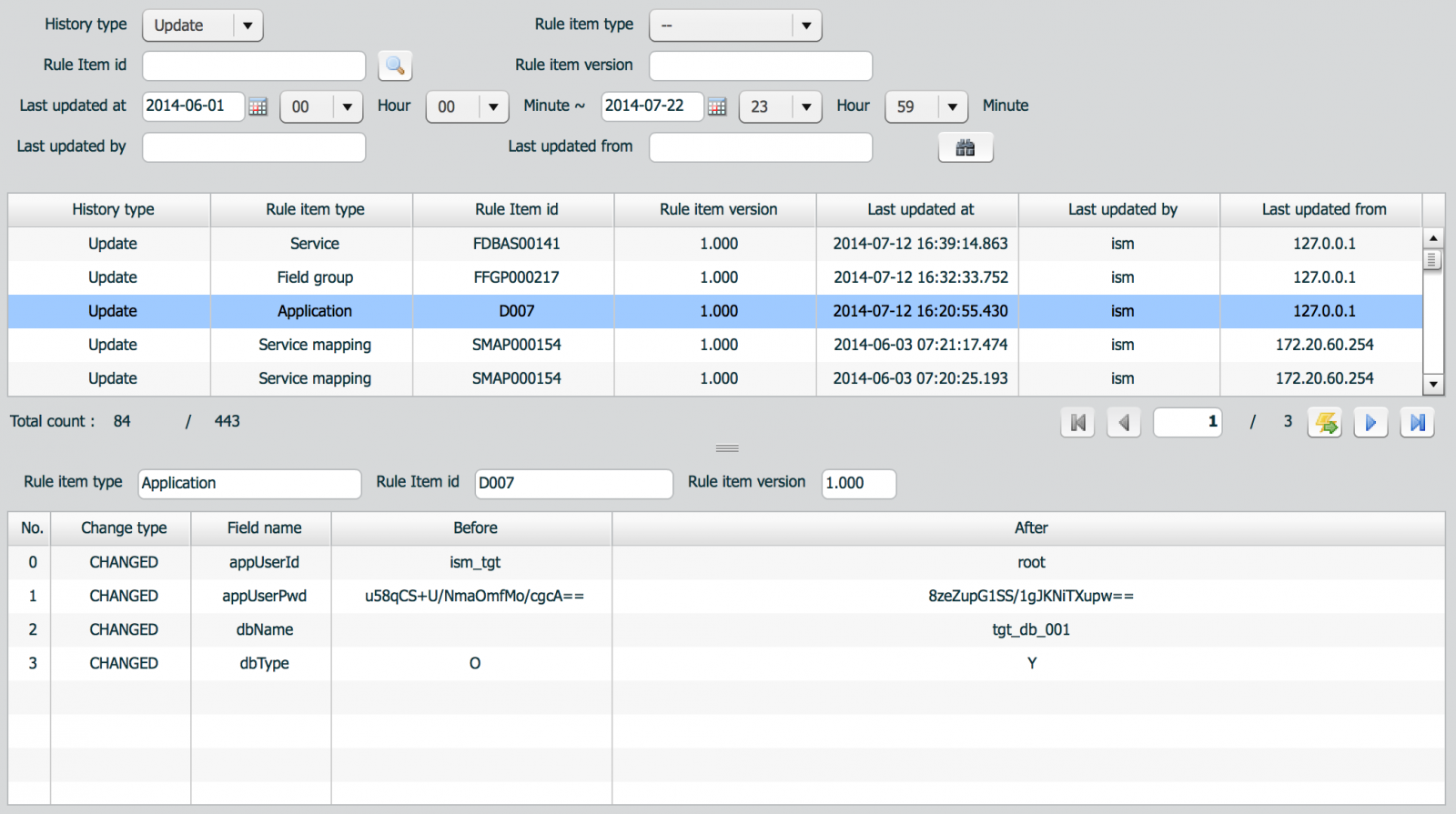

ISM executes all the jobs related to the interface development by web console. The interface is developed, applied, modified, and controlled by the console.
Execute webconsole/bin/startup.sh(bat) below ISM installation directory to start the web console. The default URL of the web console is as below.
Execute JBoss to start the web console application since it is installed as an JBoss application. The port of web console is the same as the http port of JBoss.
Default user/password which is generated on installation is "ism/fiss". This user is an admin user. To manage the privilege, log in as the admin user to create new users.
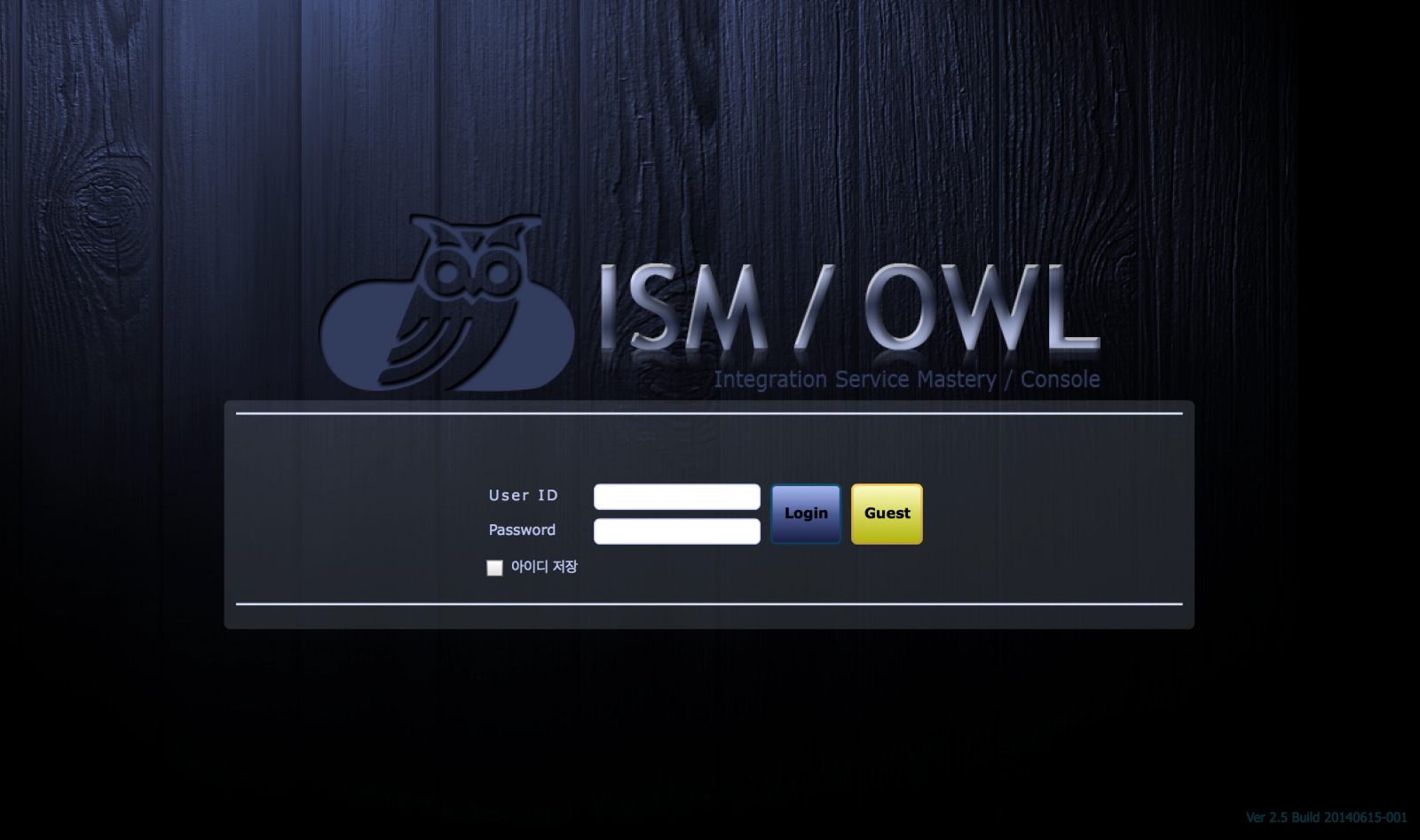
The main screen composition printed right after logging in is as below.
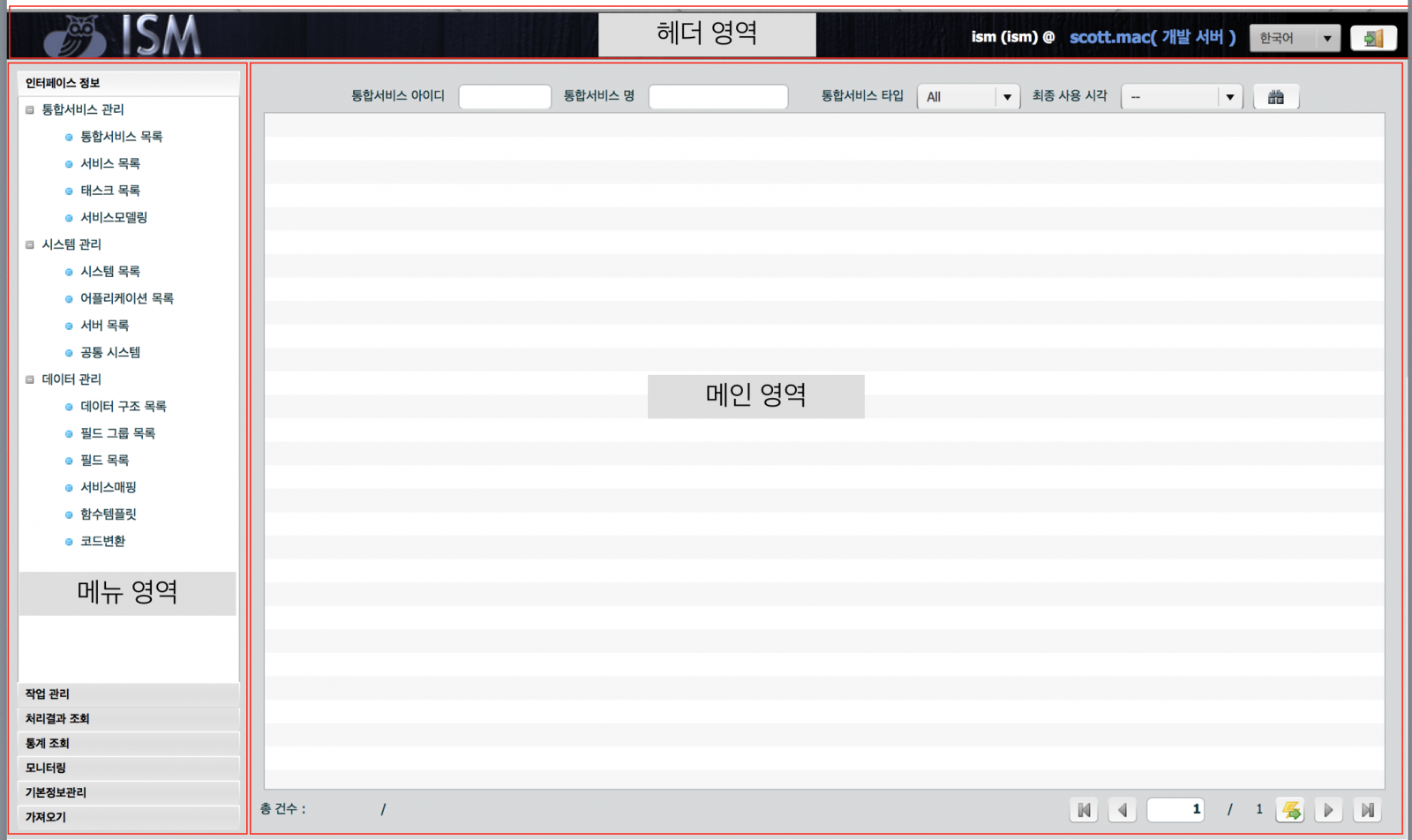
Each section information is as follows.
This menu is to manage the jobs for the interface development/modification. The items under the menu are the required to configure the interface of ISM.
| Integration Service Management | Integration Service List | Manage the ISM interface. |
| Service List | Manage the service to be used to transfer/receive. | |
| Task List | Manage the previous process/post process information to be used on batch/deferred service. | |
| Service Modeling | Manage the information of the service flow. | |
| System Management | System List | Manage the interface target system. |
| Application List | Manage the application in running on the system. | |
| Server List | Manage the information of the host where the application is running. | |
| Common System | Manage the system ID to be used on the common process. | |
| Data Management | Date Structure List | Manage the data structure to be used to the input/output of the Transfer/Receive service. |
| Field Group List | Manage the field group to constitute the data structure. | |
| Field List | Manage individual field comprising data that is used to input/output. | |
| Service Mapping | Manage the conversion information on input/output. | |
| Function Template | Manage the transform function. | |
| Code Conversion | Manage the mapping information according to code values. |
| Rule Reservation Application | Reserve the time to apply the runtime. |
| Deferred Job Management | Controls the deferred Job. |
| Import rule | Import the interface information written by another server. |
| Publish rule | Apply developed interface on runtime. |
| Online Process Result | Show the results of the online process. |
| Batch Process Result | Show the results of the file/DB batch interface. |
| Deferred Process Result | Show the results of the deferred interface. |
| Online Statistics by Time | Show the report by time of the online interface. |
| Online Statistics by Date | Show the report by date of the online interface. |
| Statistics by Batch Time | Show the report by time of the batch interface. |
| Statistics by Batch Date | Show the report by date of the batch interface. |
| Statistics by Deferred Time | Show the report by time of the deferred interface. |
| Statistics by Deferred Date | Show the report by date of the deferred interface. |
| Show Dashboard | Show the monitoring dashboard. |
| Create Dashboard | Create the monitoring dashboard |
| Custom Widget | Manage the custom monitoring widget to be printed on dashboard |
| Dashboard error message | Manage the error message printed on dashboard |
| General Code | Manage the codes related to run ISM. |
| User Management | Manage the web console user. |
| Privilege Management | Manage the user privilege by the roles of web console. |
| Rule Modification History | Show the modification history of the information constituting the interface. |
| Import WSDL | Create the service importing web service information |
| Import SAP | Create the service importing SAP RFC information |
The meaning of the buttons commonly used on the web console is as follows.
 |
Add | |
 |
Edit | |
 |
Save | |
 |
Apply master | |
 |
View master | |
 |
Runtime application | |
 |
Inquire unpublished rule | Print all the items which aren't applied to runtime among the same sort of items. |
 |
Save as a new version | The first version is saved to 1.0, and the new version is saved to 1.1. |
 |
Save as a new ID | |
 |
View impact |
If the user click "View impact" while he clicks the item, the top items using the pertinent item are printed.
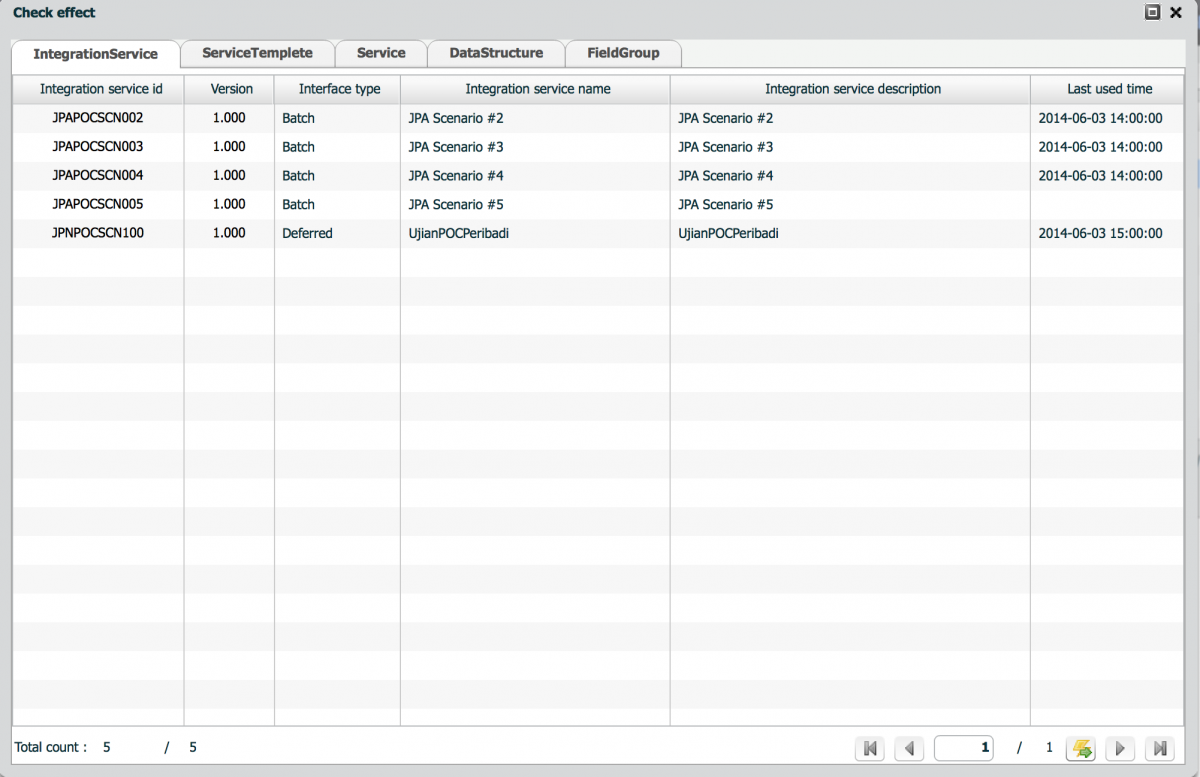
The relevant information of the interface is printed as below according to each status.
| First Creation | |
| Master application | |
| Modification after the master application | |
| Runtime application |
The information managed by codes is as the picture below.
AgentDomain is used to send the request or information to the current running ISM processes. The communication types using AgentDomain is as follows.
When the deveoped interface is applied to runtime, the location of current running process(host) must be identified to send the modified or added information to the ISM process. To send the modified or added information to the ISM process, the location of the current running process(host) must be identified. When the ISM process is on running in multiple hosts(machines), register each host, and order the host processes to register or renew the interface information.
Read the data(Transaction Message) which has used by the process stages on the process result screen of the online interface, and print it on the process result screen of the online interface.
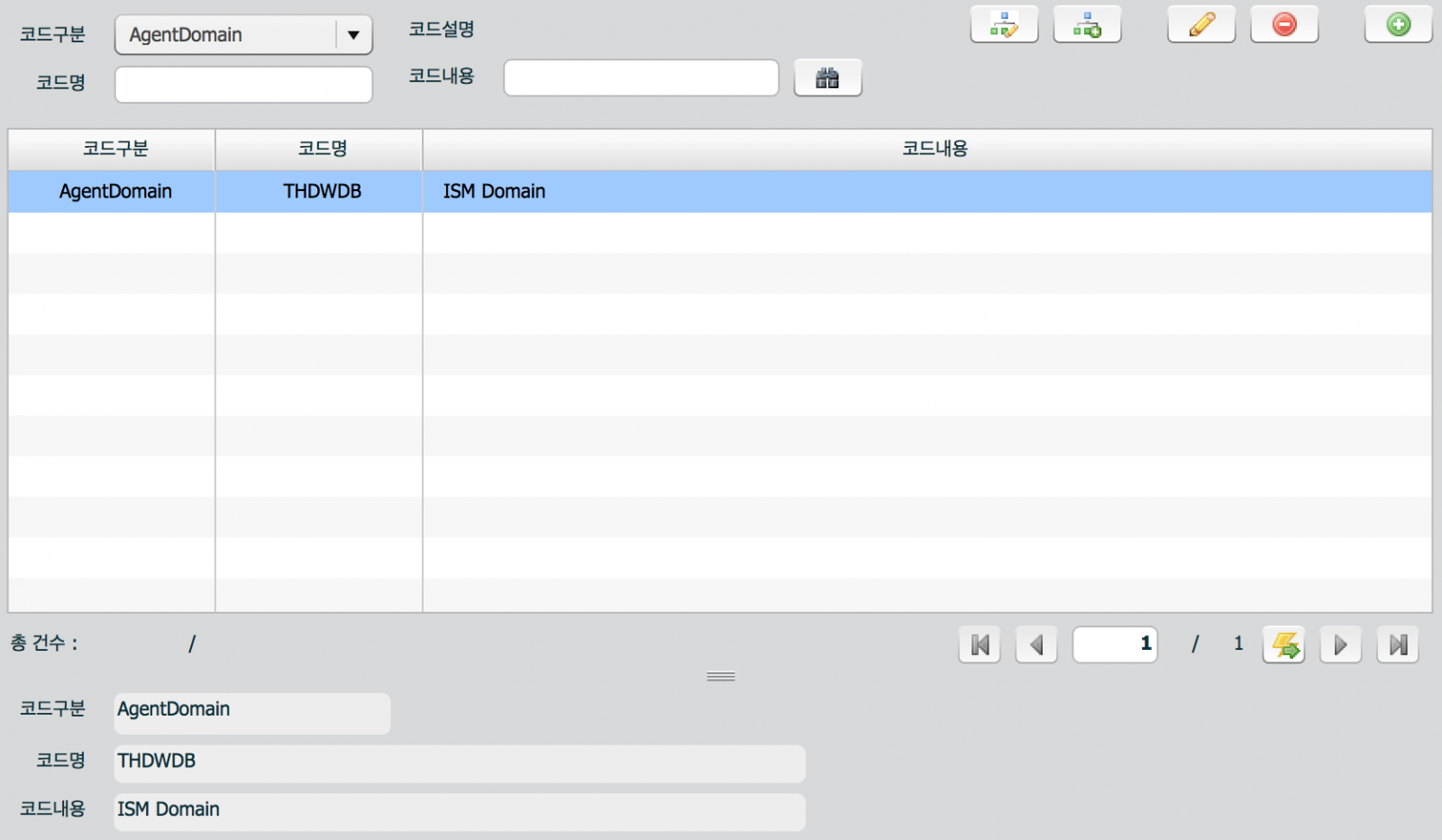
| Code Classification | AgentDomain |
| Code Name | Host name of the ISM process is running |
| Code Contents | Description of code name |
Defines what host will execute the deferred interface.

| Code Classification | DFDDomain |
| Code Name | Name of the host in running by deferred manager + ":" + queue name used by deferred manager |
| Code Contents | Description of the code name |
Businessware version is able to run the deferred processes that are using different queue name, but the WAS version such as JBoss has the same queue name of the deferred manager. WAS version is able to be running on multiple processes with a queue name by the Cluster function of Quartz scheduler.
Define the main server to restart reprocessing batch process.
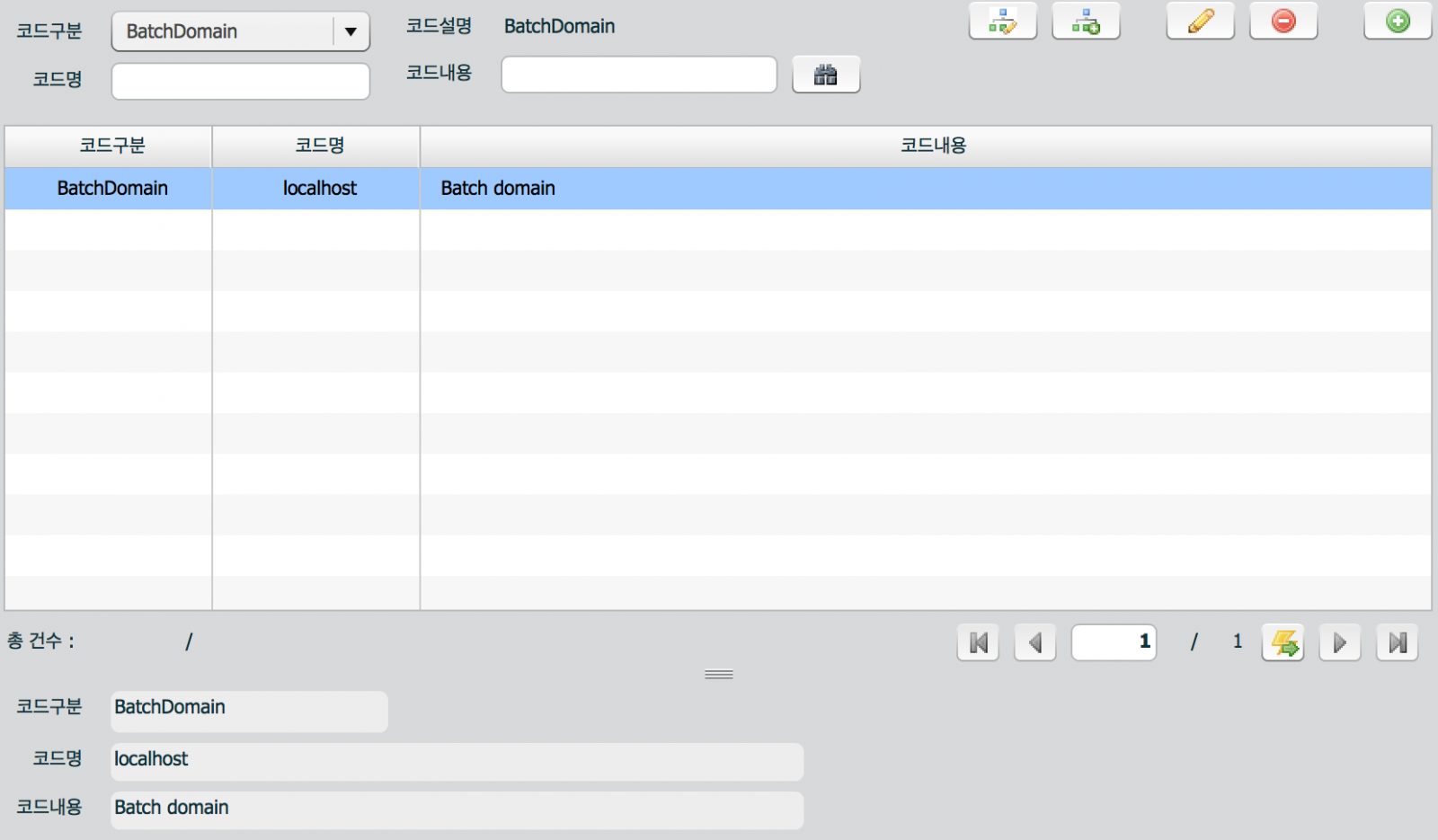
| Code classification | BatchDomain |
| Code name | Name of the host running batch manager |
| Code contents | Description of the code name |
Define the web console correspondent to the source to fetch the interface information from when the developed interface is moved(e.g. moved from development server to management server)
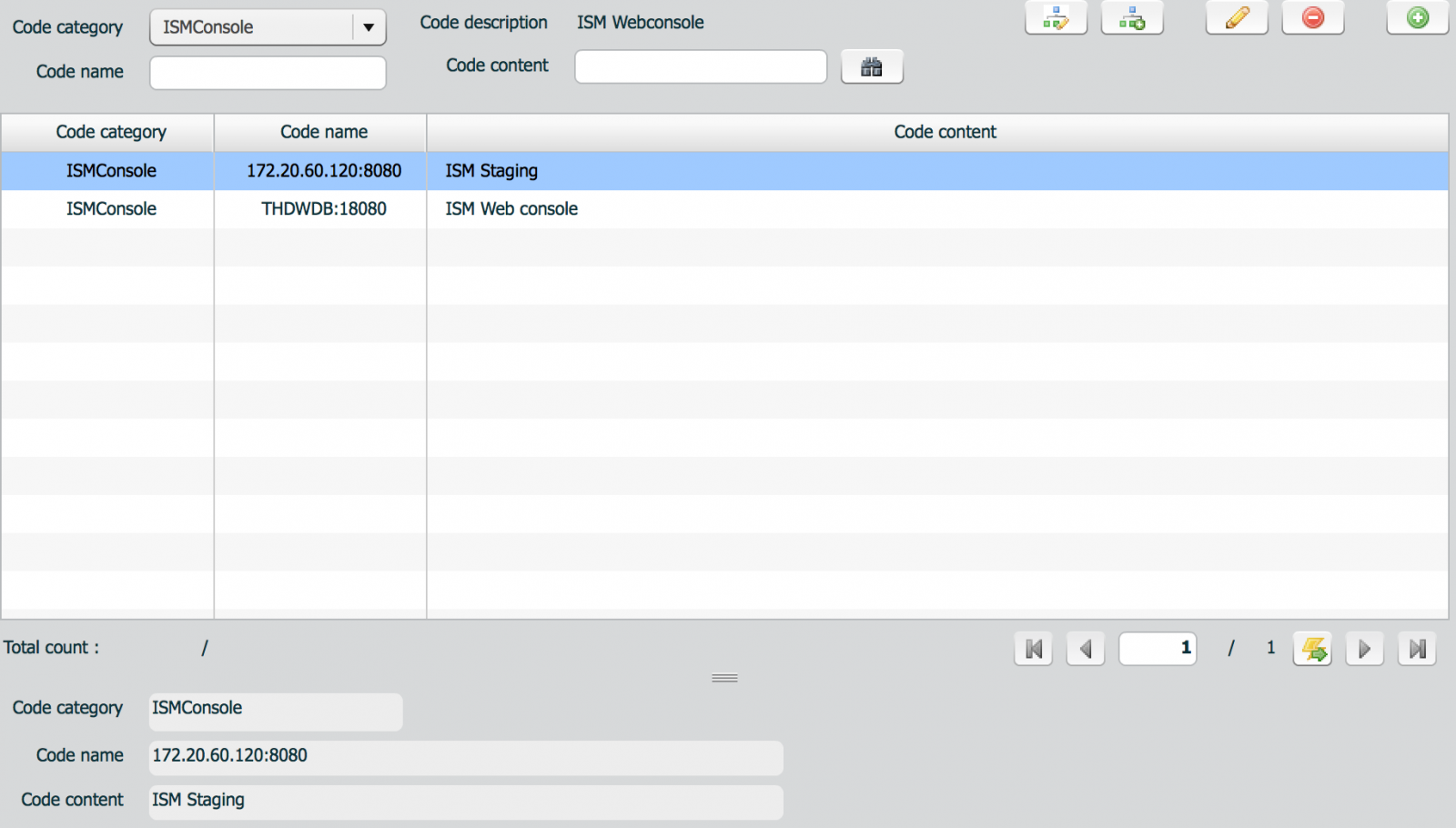
| Code Classification | ISMConsole |
| Code Name | Server in running web server + ":" + Port number |
| Code Description | Description of the code name |
Manage the user logged in the web console.
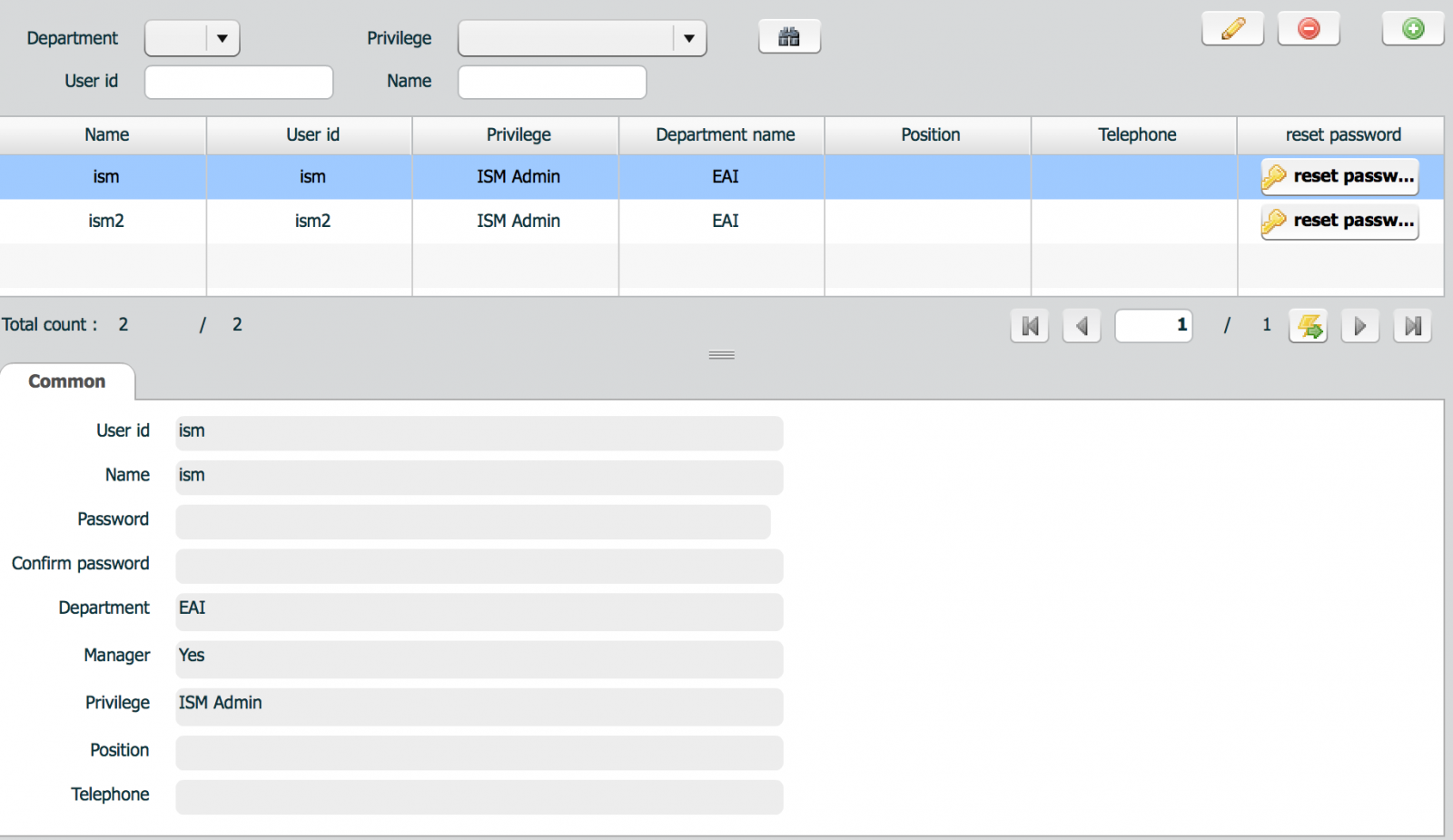
| Properties | Description | Note |
|---|---|---|
| User Id | User Identification | |
| Name | User Name | |
| Password | Password | A number under 16-digit number, character, special characters are available. |
| Department | User Business Team | Not in use |
| Manager | Manager Status | Not in use |
| Privilege | User Privilege | User privilege to access the screen |
| Position | User Position | Not in use |
| Telephone | Telephone number | Not in use |
Define which menu a user can access. Access privilege is set per the role not user.

Click SAVE to save the menu to be allowed to the selected role.
Reload the screen to apply the changes since the privilege setting is saved.
Rule Modification History shows the modification record of each item on the interface. The type of modification is as follows.
